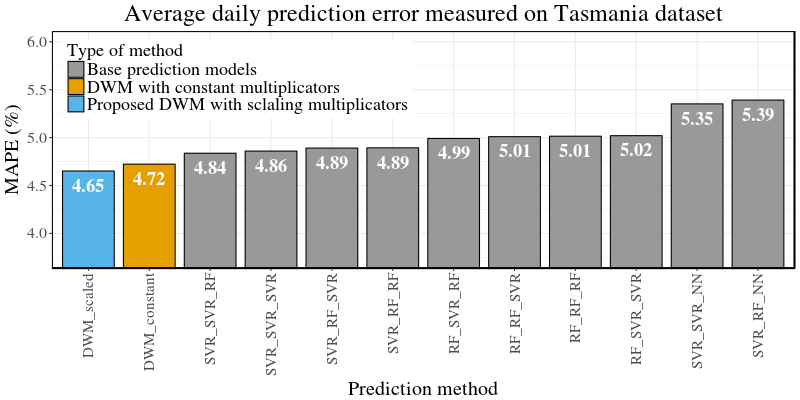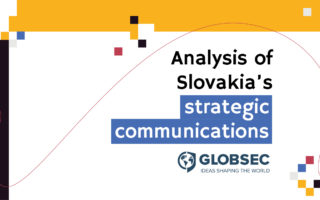What's
Application of biologically inspired algorithms to improve precision of power load predictions
Marek Lóderer is our new successfully graduated PhD in KinIT and in his dissertation project he focused on methods of predictive analysis in the field of power engineering. Let’s have a brief look at his research.
Nowadays, the power grid undergoes an important transformation. It is becoming more flexible, robust, adaptive; in other words – smart. New technologies and components, such as renewable energy sources, large-capacity batteries, and electric cars (Fig. 1) are being introduced into the power grid, which brings many benefits, but also several challenges. These challenges are related to ensuring a reliable energy supply, designing a robust architecture, or improving the security of collected energy data.
Moreover, smart meters have become an integral part of the energy network. Their task is to periodically record measurements of consumed and produced energy in the grid. The unprecedented volume of collected data provides opportunities for development of more sophisticated prediction models that can predict future events in the network more accurately. Thanks to the accurate predictions, it is possible to use resources more efficiently, minimize regulatory fees for unwanted load fluctuations and reduce negative impact on the environment. Accurate and reliable short-term predictions are essential for the power load domain and therefore they have been receiving an increased attention.
To solve the problem of reliable short-term prediction, I decided to use an approach called ensemble learning, into which I integrated various improvements.
In simple terms, ensemble learning (Fig. 2) can be described as a process which employs a set of models whose outputs are combined in such a way that gives the most accurate final result. In our case, it is the one day ahead prediction of electricity load consumption.

In my research, I defined previously mentioned combination of models as an optimization problem, which I decided to solve using meta-heuristic optimization algorithms, such as genetic algorithm, grey wolf optimizer, artificial bee colony, or biogeography-based optimization. These algorithms were chosen because they achieve great results even in solving difficult optimization problems.
Moreover, the use of meta-heuristic optimization algorithms in combination with ensemble learning is currently not fully explored. In addition to enhancing the prediction accuracy, the results of our experimental verification helped us to answer several open-research questions and thus broaden the overall knowledge in this area. Based on our research, we can now answer the question: which group of optimization algorithms combined with ensemble learning provides the best results, or to what extent the pruning affects the overall accuracy of predictions.
In the final stage of my dissertation, I focused on the combination of models based on dynamic weighted majority method (DWM) and time series decomposition. This approach achieved high accuracy and fast adaptability to unexpected changes in energy consumption.
Results of experiments performed on real power consumption datasets show a successful reduction of the prediction error. Figure 3 shows a sample of the results, in which we can compare the accuracy of the proposed DWM method and other prediction methods.

The knowledge that I acquired during my dissertation is applicable in practice, especially in tasks requiring prediction of electricity consumption or detection of anomalous conditions in the power grid. The acquired knowledge will certainly be used in other energy projects which KInIT participates in.
The latest project, in which I participate in, is the disaggregation of electricity consumption into consumptions of individual electrical appliances in households. This project is implemented in cooperation with ZSE. The disaggregation of power load consumption helps energy suppliers to better understand the needs of their customers, which further allows them to supply electricity more efficiently, set favorable tariffs for customers, and manage smart households more precisely.
Selection from Marek’s publications:
- M. Cuper, M. Lóderer, and V. Rozinajová (2019). Detection of abnormal load consumption in the power grid using clustering and statistical analysis. In Intelligent Data Engineering and Automated Learning – IDEAL 2019. Springer International Publishing. pp. 464–475.
- P. Laurinec, M. Lóderer, M. Lucká, and V. Rozinajová (2019). Density-based unsupervised ensemble learning methods for time series forecasting of aggregated or clustered electricity consumption. In Journal of Intelligent Information Systems. Vol. 53, 219.
- V. Rozinajová, A. Bou Ezzeddine, M. Lóderer, J. Loebl, R. Magyar and P. Vrablecová (2018). Computational intelligence in smart grid environment. In A. K. Sangaiah, Z. Zhang, & M. Sheng (Eds.), Computational intelligence for multimedia big data on the cloud with engineering applications, Intelligent Data-Centric Systems. (pp. 23-59). Cambridge, MA, USA: Elsevier.
- M. Lóderer, P. Pavlík, and V. Rozinajová (2018). Improving time series prediction via modification of dynamic weighted majority in ensemble learning. In Intelligent Data Engineering and Automated Learning – IDEAL 2018. Springer International Publishing. pp. 651–660.
- P. Halaš, M. Lóderer, and V. Rozinajová (2017). Prediction of electricity consumption using biologically inspired algorithms. In 2017 IEEE 14th International Scientific Conference on Informatics (IEEE). (Poprad, 2017) pp. 98-103.


